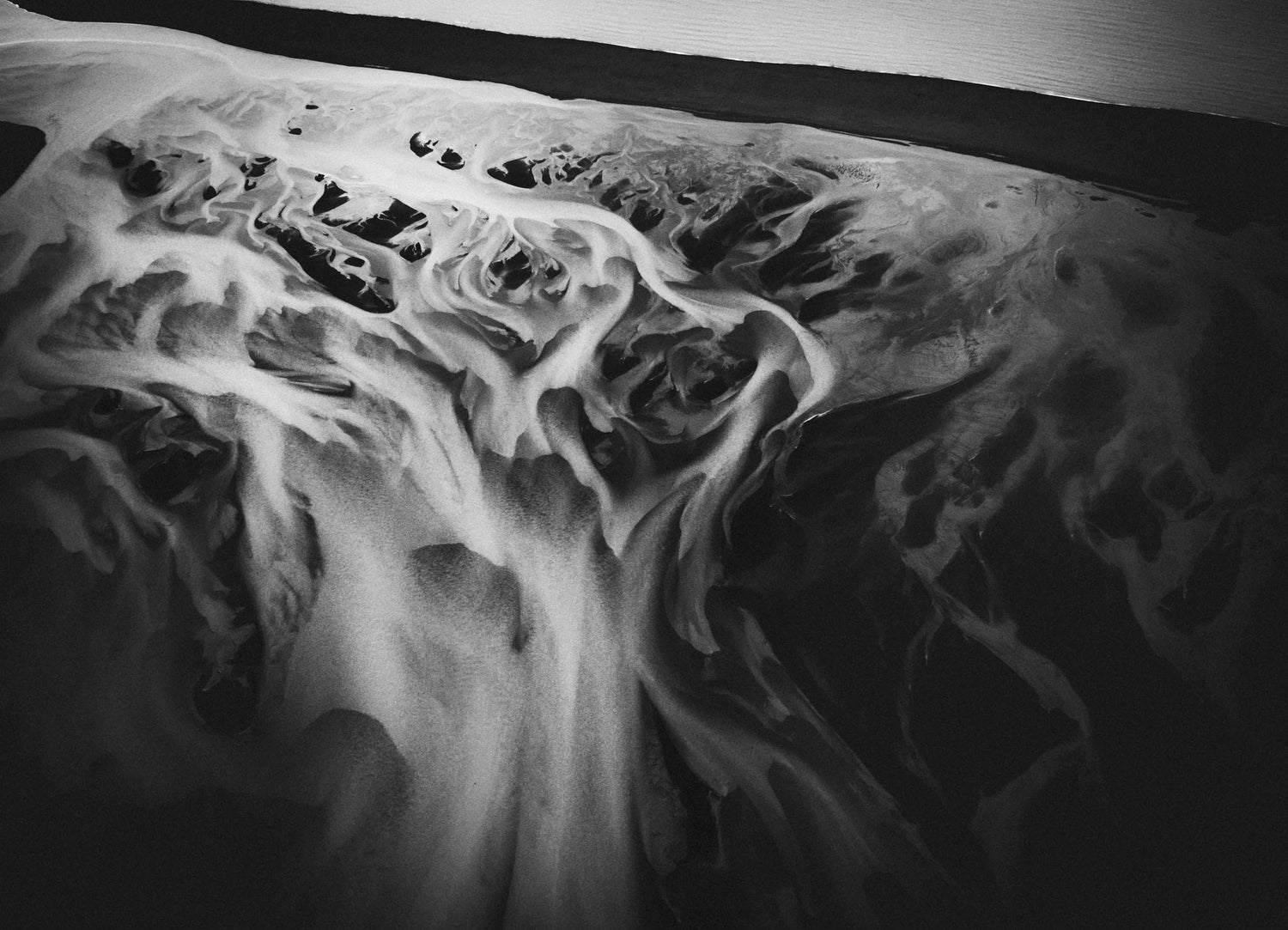
Anatomy of Water — Skjálfandafljót
— from the upcoming collection Traces of Water —
In North Iceland, the air carries a different kind of silence — one that invites you to listen. The wind was steady that morning — strong enough to lift me, but soft enough to trust.
I ran across the grassy slope outside Húsavík, the canopy rising behind me, the ground falling away until there was only air. The noise of the world thinned into a single rush of sound — wind, breath, and the faint hum of distance.
Paragliding high above, the landscape unfolded like a living map. Glacial rivers branched and wove through black volcanic sand, their paths glinting like threads of silver light. One of them — Skjálfandafljót — I knew well. It’s the same river that forms Goðafoss, one of Iceland’s most powerful waterfalls. I had stood at its edge many times, feeling its roar in my chest. But from up here, it revealed another truth — quieter, older, almost anatomical.
The river didn’t just move through the land; it seemed to be the land — veins and arteries carrying the memory of glaciers toward the sea. I watched as it widened and slowed, reaching the black sand delta before merging with the ocean — that faint stripe of horizon visible in the upper corner of the frame, where fresh water meets salt.
Suspended above it all, I felt a strange calm. The air was cold, carrying the smell of seaweed and snowmelt, and for a moment, everything below seemed to breathe in rhythm.
When I pressed the shutter, it wasn’t just to capture a view — it was to hold that sensation of motion and stillness combined, of seeing water not as a surface but as a living structure.
Later, when I looked at the photograph, I realized it mirrored something human — a body of flow and memory, a pulse written in light.
Even now, I can close my eyes and feel the glide of air beneath me, the quiet strength of the wind carrying me forward — tracing the same path the river takes, from mountain to sea.
This piece is part of Traces of Water — my new series, a meditation on movement and memory, on how the land holds every path water has ever taken. Each artwork captures a moment that will never return, yet still lives on in the shape it left behind. The full series will be revealed very soon.


